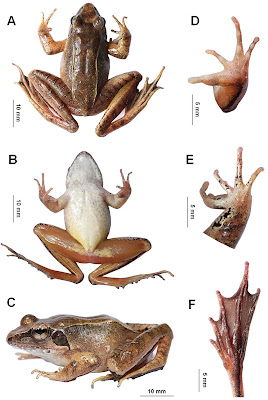 |
| Impatiens quintadecimacopii G. W. Hu & Q. F. Wang, in Zhang, Peng, Tian, Hu & Wang, 2020. |
Abstract
Impatiens quintadecimacopii G. W. Hu & Q. F. Wang sp. nov. is described and I. porrecta is reported as a new record from southwestern Yunnan province of China. These two species are close in morphology but can be distinguished by color of flowers, shape of lateral sepals and upper petals, and color of capsules. Morphological characters of these two species indicate they belong to sect. Uniflora in I. subg. Impatiens. Phylogenetic analysis of a combined dataset from nuclear ITS and plastid atpB-rbcL sequences confirmed their close relationship and their phylogenetic placement in sect. Uniflora.
Key words: Impatiens, New species, New record, Phylogeny, Taxonomy, China
Impatiens quintadecimacopii G. W. Hu & Q. F. Wang sp. nov.
Etymology: The specific epithet "quintadecimacopii" is derived from the Fifteenth Meeting of the Conference of the Parties of the United Nations Convention on Biological Diversity (CBD COP15). This species is named for this upcoming conference which will be hold in Kunming, Yunnan, China in 2021.
Zhang Cai-Fei, Peng Shuai, Tian Jing, Hu Guang-Wan and Wang Qing-Feng. 2020. A New Species and A Newly Recorded Species of Impatiens (Balsaminaceae) from Yunnan, China. Plant Science Journal. 38 (4); 437-447. DOI: 10.11913/PSJ.2095-0837.2020.40437

















































